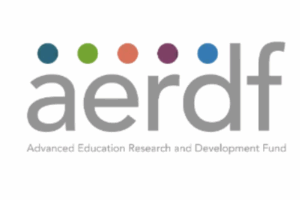Jobs & Careers
Salesforce to Acquire Waii

Cloud computing giant Salesforce signed an agreement to acquire Waii, an enterprise-grade natural language-to-SQL platform, on August 7. The acquisition is expected to close in Q3 FY26, Salesforce said.
Waii is an enterprise data intelligence platform that uses a dynamic metadata knowledge graph to map an organisation’s complete data landscape, including schemas, relationships, metrics and governance rules.
Leveraging this context, it translates natural language questions into accurate, optimised, dialect-specific SQL queries, with built-in query optimisation and enterprise integration.
After the acquisition is finalised, Salesforce stated that it plans to integrate Waii into its Data Cloud service.
Waii’s technology is expected to enhance Salesforce’s ability to provide “more intuitive ways to explore and manage data”. Moreover, it aims to enable faster and more relevant analytics as it underpins Tableau’s semantic engine, which is powered by a live knowledge graph.
“Waii’s core technology, which dynamically builds a metadata knowledge graph of an enterprise’s data, will enable agentic workflows and AI-powered insights across the Salesforce platform, including Agentforce and Tableau Next,” the company said.
“At Salesforce, we know that a deep understanding of metadata is the key to this future. With Waii, we’re not just augmenting our stack; we’re acquiring the catalyst that makes this vision a reality for our customers,” Raveendrnathan Loganathan, EVP of Salesforce Data Cloud, said.
Salesforce did not officially reveal the financials behind this acquisition.
In 2025 alone, Salesforce completed the acquisitions of multiple companies. A few months ago, the company acquired Convergence.ai, a company that develops agentic systems that perform complex tasks in digital environments.
Moreover, the company agreed to acquire cloud data management firm Informatica in a deal worth approximately $8 billion in equity, not including Salesforce’s existing investment. According to the agreement, Informatica shareholders will get $25 in cash for each share.
The post Salesforce to Acquire Waii appeared first on Analytics India Magazine.
Jobs & Careers
NVIDIA & AMD to Now Pay 15% of China Sale Revenue to the US

US chipmakers NVIDIA and AMD recently received permission to sell their H20 and MI308 AI chips to China, respectively, amid tightened export controls. According to the latest reports, companies will now allocate 15% of their revenue from sales of these advanced chips to the US government.
The agreement follows the Donald Trump administration’s decision in April to halt H20 chip sales to China. By early 2025, Chinese firms reported severe shortages, and NVIDIA had warned of a potential $5.5 billion hit to its bottom line. Notably, last month, the administration allowed both NVIDIA and AMD to resume sales after obtaining export licences.
NVIDIA had also announced the RTX PRO GPU, a China-specific chip engineered to comply with US regulations. The RTX PRO joins the H20 and other variants, designed to maintain NVIDIA’s presence in China while adhering to legal boundaries.
China is a key market for both companies. In a visit to Beijing in April, NVIDIA CEO Jensen Huang said China was a critical market for NVIDIA and added, “We hope to continue to cooperate with China.”
Moreover, at the opening ceremony of the third China International Supply Chain Expo in Beijing this year, Huang called Chinese AI models “world-class”. This included DeepSeek, the one model that was ‘banned’ on multiple US government devices like those of NASA and the Navy.
In the same ceremony, he asserted that he has excellent relations with “just about’ every government”. “Anyone who discounts Huawei and China’s manufacturing capability is deeply naive. This is a formidable company, and I’ve seen the technologies they’ve created in the past,” he added.
Moreover, US commerce secretary Howard Lutnick said last month that the resumption of AI chip sales was part of negotiations with China to secure rare earths. He described the H20 as NVIDIA’s “fourth-best chip” and said it was in the US’ interests for Chinese firms to use American technology, even if the most advanced chips remained restricted.
The post NVIDIA & AMD to Now Pay 15% of China Sale Revenue to the US appeared first on Analytics India Magazine.
Jobs & Careers
Graas.ai Secures $9 Million to Expand AI Agent Foundry in India

Email:
info@aimmediahouse.com
Our Offices
AIM India
1st Floor, Sakti Statesman, Marathahalli – Sarjapur Outer Ring Rd, Green Glen Layout, Bellandur, Bengaluru, Karnataka 560103
AIM Americas
166 Geary St STE 1500 Suite #634, San Francisco, California 94108, United States
Jobs & Careers
Agentic AI Hands-On in Python: A Video Tutorial


Image by Editor | ChatGPT
# Introduction
Sometimes it feels like agentic AI is just AI that’s taken an improv class and now won’t stop making its own decisions. Trying to more accurately define agentic AI can feel like explaining jazz to someone who’s never heard music. It’s part autonomy, part orchestration, and 100% guaranteed to make you question who’s actually running the show.
Well, there’s no need to be confused by agentic AI any longer. This video, recently recorded from an ODSC talk and made broadly available by its creators, is a comprehensive four-hour workshop on agentic AI engineering, hosted by Jon Krohn of the Jon Krohn YouTube channel and Super Data Science podcast, and Edward Donner, co-founder and CTO of Nebula.
The video dives into the definition, design principles, and development of AI agents, emphasizing the unprecedented opportunity to derive business value from AI applications using agentic workflows in 2025 and beyond. It covers a range of frameworks and practical applications, showcasing how large language model (LLM) outputs can control complex workflows and achieve autonomy in tasks. The instructors highlight the rapid advancements in LLM capabilities and the potential for agentic systems to augment or fully automate business processes.
The workshop emphasizes the hands-on nature of the content, with an accompanying GitHub repository with all the code for viewers to replicate and experiment with. The instructors frequently stress the rapid evolution of the field and the importance of starting small with agentic projects to ensure success.
# What’s Covered?
Here are the more specific topics covered in the video:
- Defining Agents: The video defines AI agents as programs where LLM outputs control complex workflows, emphasizing autonomy and distinguishing between simpler predefined workflows and dynamic agents proper.
- The Case for Agentic AI: It highlights the unprecedented opportunity in 2025 to derive business value from agentic workflows, noting the rapid improvement of LLMs and their dramatic impact on benchmarks like Humanity’s Last Exam (HLE) when used within agentic frameworks.
- Foundational Elements: Core concepts such as tools (enabling LLMs to perform actions) are explained, alongside inherent risks like unpredictability and cost, and strategies for monitoring and guardrails to mitigate them.
- Implications of Agentic AI: The workshop also addresses the implications of Agentic AI, including workforce changes and strategies for future-proofing careers in data science, emphasizing skills like multi-agent orchestration and foundational knowledge.
Agentic AI frameworks, the tools of the agentic revolution, covered include:
- Model Context Protocol (MCP): an open-source standard protocol for connecting agents with data sources and tools, often likened to a ‘USBC for agentic applications’
- OpenAI Agents SDK: a lightweight, simple, and flexible framework, used for deep research
- CrewAI: a heavier-weight framework specifically designed for multi-agent systems
- More complex frameworks like LangGraph and Microsoft Autogen are also mentioned
Finally, the hands-on coding exercises in the video include:
- Practical demonstrations include recreating OpenAI’s Deep Research functionality using the OpenAI Agents SDK, showcasing how agents can perform web searches and generate reports
- Discussions on design principles for agentic systems cover five workflow design patterns: Prompt Chaining, Routing, Parallelization, Orchestrator Worker, and Evaluator Optimizer
- Building an autonomous software engineering team with CrewAI is demonstrated, where agents collaborate to write and test Python code and even generate a user interface, highlighting CrewAI’s ‘batteries included’ features for safe code execution
- The final project involves developing autonomous traders using MCP, demonstrating how agents can access real-time market data, leverage persistent knowledge graphs, and perform web searches to make simulated trading decisions
# Expected Takeaways
After watching this video, viewers will be able to:
- Grasp the fundamental concepts of AI agents, including their definition, core components like tools and autonomy, and the distinction between constrained workflows and dynamic agent systems.
- Implement agentic systems using popular frameworks such as those from OpenAI and CrewAI, gaining hands-on experience in setting up multi-agent collaborations and leveraging their unique features, like structured outputs or automated code execution.
- Understand and apply the Model Context Protocol (MCP) for seamless integration of diverse tools and resources into agentic applications, including the ability to create simple custom MCP servers.
- Develop practical agentic applications, as demonstrated by the recreation of deep research functionality and the construction of an autonomous software engineering team and simulated trading agents.
- Recognize and mitigate risks associated with deploying agentic systems, such as unpredictability and cost management, through monitoring and guardrails.
If you’re looking for a resource to straighten out agentic AI for you and show you how you can leverage the burgeoning technology in your AI engineering exploits for this year and beyond, check out this great video by Jon Krohn and Edward Donner.
Matthew Mayo (@mattmayo13) holds a master’s degree in computer science and a graduate diploma in data mining. As managing editor of KDnuggets & Statology, and contributing editor at Machine Learning Mastery, Matthew aims to make complex data science concepts accessible. His professional interests include natural language processing, language models, machine learning algorithms, and exploring emerging AI. He is driven by a mission to democratize knowledge in the data science community. Matthew has been coding since he was 6 years old.
-

 Events & Conferences3 months ago
Events & Conferences3 months agoJourney to 1000 models: Scaling Instagram’s recommendation system
-

 Funding & Business1 month ago
Funding & Business1 month agoKayak and Expedia race to build AI travel agents that turn social posts into itineraries
-

 Jobs & Careers1 month ago
Jobs & Careers1 month agoMumbai-based Perplexity Alternative Has 60k+ Users Without Funding
-

 Education1 month ago
Education1 month agoVEX Robotics launches AI-powered classroom robotics system
-

 Education1 month ago
Education1 month agoAERDF highlights the latest PreK-12 discoveries and inventions
-

 Mergers & Acquisitions1 month ago
Mergers & Acquisitions1 month agoDonald Trump suggests US government review subsidies to Elon Musk’s companies
-

 Jobs & Careers1 month ago
Jobs & Careers1 month agoAstrophel Aerospace Raises ₹6.84 Crore to Build Reusable Launch Vehicle
-

 Podcasts & Talks1 month ago
Podcasts & Talks1 month agoHappy 4th of July! 🎆 Made with Veo 3 in Gemini
-

 Podcasts & Talks1 month ago
Podcasts & Talks1 month agoOpenAI 🤝 @teamganassi
-

 Jobs & Careers1 month ago
Jobs & Careers1 month agoTelangana Launches TGDeX—India’s First State‑Led AI Public Infrastructure





















